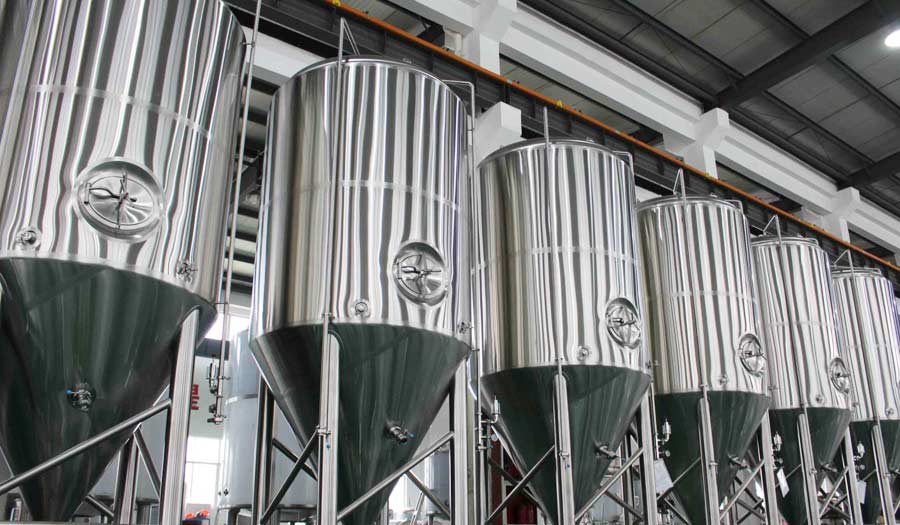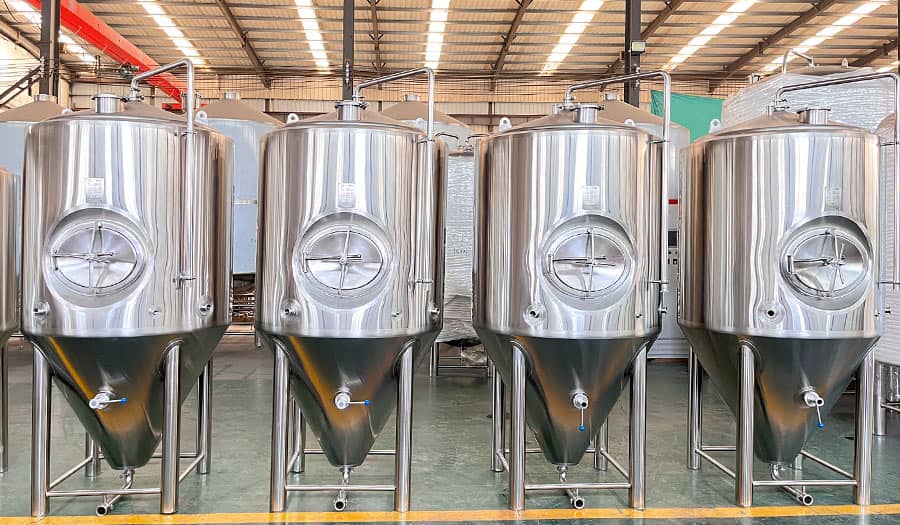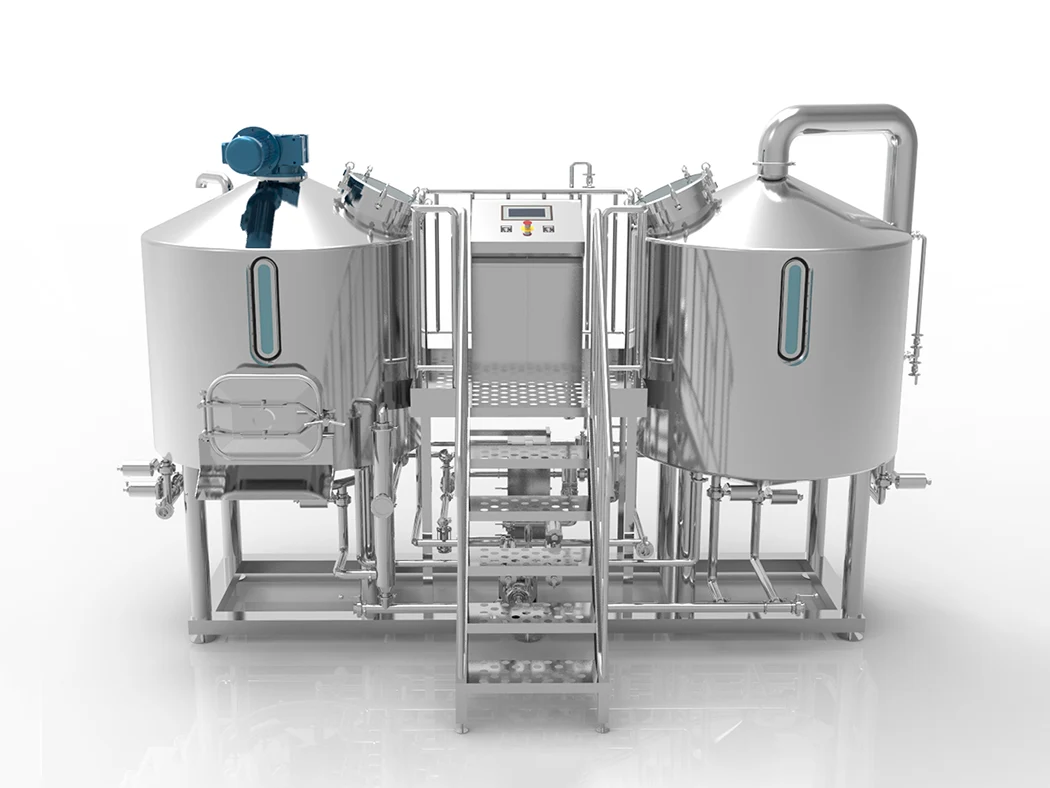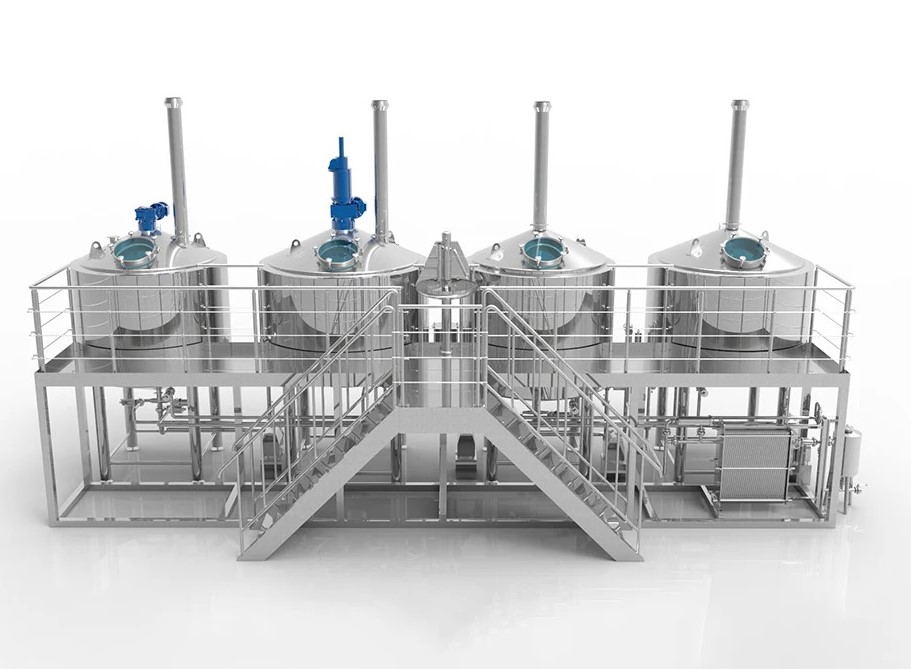Sticky yeast rings, inconsistent flavors, and lost batches of beer can crush a brewer’s dream. A stainless steel conical fermenter ends the frustration, letting you ferment with pro‑level precision in the same tank the legends use.
A 맥주 발효기 is a sealed vessel where wort becomes beer through yeast activity. Stainless steel conical fermenters outperform glass carboys and plastic buckets because the smooth food‑grade surface, integrated valves, and cone‑shaped bottom keep oxygen out, drop trub, simplify cleaning, and ensure repeatable craft‑beer quality.
1. What Is a Fermenter and Why Does Stainless Steel Matter?
A 발효기 is the heart of the 브루잉 시스템. Here, yeast converts sugars into alcohol, CO₂, and precious flavor compounds. For modern craft beer and kombucha makers, 스테인리스 스틸 is the gold standard:
| 재질 | Oxygen Barrier | Sanitize Ease | Service Life | 비용 |
|---|---|---|---|---|
| 스테인리스 스틸 | 우수 | 청소가 용이함 with caustic & steam | 20 + years | $$ |
| 유리 카보이 | Very good | Break‑risk, narrow neck | 5–8 years | $ |
| 플라스틱 양동이 | 보통 | Scratches trap trub & bacteria | 1–3 years | $ |
Stainless delivers repeatable flavor and low lifetime cost. The mirror‑polished surface resists 침전물, survives aggressive caustic, and handles hot‑side sanitize cycles without warping.
“I switched from glass carboys to an 8 bbl 유닛뱅크 last year. Carb stones, sampling valves, and cone dumps cut my cellar time by 30 %.” — Jess, small‑batch brewer
Explore more about 나노 양조장 장비 and how right‑sized tanks unlock scale.

2. How Does a Conical Fermenter Improve Fermentation Quality?
Sediment separation
에서 원뿔형 발효기, yeast and trub slide into the cone after primary 발효. A bottom dump 밸브 removes debris without exposing beer to air.
Racking without siphons
전용 racking port above the sediment line lets you move bright beer to a 브라이트 탱크 또는 keg. No more messy plastic tubes—just clamp, open, flow.
Flexibility for brewers
Upgrade to a jacketed 유닛뱅크 and you can carbonate in the same vessel. That saves footprint, minimizes transfers, and keeps precious beer safe.
Deep dive into stainless steel conical fermenter benefits to see why professional cellars trust the cone.

3. Glass Carboys, Plastic Buckets, or Stainless Steel Fermenters—Which Fits Your Brew Day?
| 기능 | 유리 카보이 | 플라스틱 버킷 | Stainless Steel Conicals |
|---|---|---|---|
| Volume Options | 1–6 gallon | 5–7 gallon | 5 gallon to 200 bbl |
| 에어락 Interface | Bung & bubbler | Snap‑lid grommet | Tri‑Clamp cap |
| Impact Resistance | ✗ Breakable | ✓ Durable | ✓✓ Indestructible |
| Easy cleaning | Narrow neck | Scratches | CIP 스프레이 볼 |
Brewers using 유리 카보이 love clarity but fear shattered vessels. 플라스틱 발효기 are cheap yet stain quickly. A 스테인리스 스틸 발효기—from 5 gallon homebrew size to 30 bbl—balances safety, clarity via top sight glass, and long‑term ROI.
Homebrewers looking for a budget step‑up often choose the Spike Flex or the insulated FermZilla for pressure capability.
4. What Size Fermenter Fits Your Batch? From 5 Gallon to 30 BBL
Small batch creators (kombucha, pilot beer, experimental yeast strains):
- 7 gallon cone fits double‑density 5 gallon wort plus krausen headspace.
- Leg extensions raise height for easy spigot dumps.
Scale‑up brewpubs need:
- 10 bbl jacketed 유닛뱅크—double‑turn 5 bbl brew day means two fermentations per 24 h.
- Dual‑zone jackets enable precise 온도 제어 for lager schedules.
지역 수제 맥주 양조장:
- 30 bbl CCTs with temp control coil and CIP, paired with automated 냉각기 loops.
See a real‑world upgrade path in our micro brewery equipment guide.

5. Temperature Control: Chiller Coils, Neoprene Jackets, and External Controllers
Jacketed cooling
Glycol flows through dimple jackets or a serpentine 냉각기 coil welded to the shell. A digital controller keeps 발효 within ±0.2 °C—vital for ester‑sensitive Belgian yeast.
Insulating or heating
A neoprene jacket wraps a non‑jacketed 발효기; immersion heaters or heat belts add warmth for winter 홈 브루잉.
External temperature controllers
Plug‑and‑play inkbird or advanced PLCs modulate pumps and solenoids. When fermentation is complete, crash‑cool to 2 °C to drop yeast and improve brite clarity.
6. Dry Hop Dreams: Adding Hop Aroma Without Oxygenation
Late aroma defines modern craft beer. A pressurized 원뿔형 발효기 lets you dry hop through a butterfly 밸브 under CO₂ blanket:
- Purge hop torpedo with CO₂.
- Connect via tri‑clamp to the tank.
- Open valve—hop pellets dive, no foam geyser, zero oxygenation.
The conicals we build include a 4‑inch hop port and TC sample cock for daily gravity checks.
7. Maintaining Sanitation: Easy Cleaning and Tri‑Clamp Connections
- Spray ball Clean‑in‑Place—hot caustic + 82 °C rinse kills microbes.
- Tri‑clamp ferrules accept CIP arms, carb stones, and thermometer wells.
- Smooth welds (inside Ra ≤ 0.4 µm) thwart trub adhesion; weld maps documented for every tank.
Need a quick refresher? Our technicians created a free SOP on how to clean and sanitize stainless fermenters—download it after reading the professional brewing equipment checklist.
8. Scaling Up: Unitank Flexibility for Brewpubs and Beverage Entrepreneurs
A 유닛뱅크 merges primary fermentation, lagering, and carbonation. Results:
- Flexibility and freedom during fermentation—pressure‑cap keeps volatiles in.
- Single vessel equals lower capital cost and faster ROI.
- Ready‑to‑serve beer in the same tank reduces transfers and infection risk.
Winemakers and cider houses convert the cone to low‑psi aging mode—proof that a 유닛뱅크 supports 와인 제조 and kombucha too.
9. Case Study: From Grainfather Conical to 10 000 L—A Grain to Glass Journey
Claire began on a Grainfather conical fermenter pro in her garage. Six medals and rising demand later she financed:
- Three 20 hl stainless steel conical fermenters with inline oxygen diffusers.
- 자동화된 ss brewtech BrewCommander brewhouse.
- A 20 hl brite cell for packaging.
ROI arrived in 18 months. “Conical fermenter pro gives brewers more flexibility and freedom than ever,” Claire says, pouring her flagship hazy IPA.
10. Frequently Asked Questions About Fermentation Tanks
How often should I dump yeast from the cone?
Every 24–48 h during active fermentation; adjust based on yeast strain flocculation.
Can a stainless steel fermenter be used for kombucha or cider?
Yes. The inert SS surface resists acid; just sanitize between beverages.
What pressure can a unitank handle?
Standard design is 2 bar; upgrade to 3 bar for spunding and burst carbonation.
Is a 6 gallon glass carboy still useful?
Sure—great for split‑batch sour projects, but watch for thermal shock.
Does a spike brewing conical fit in a fridge?
Most 7 gal models do; remove leg extensions or use a dedicated glycol loop.
When is fermentation complete?
Stable gravity 48 h apart and no rising CO₂ indicate completion; confirm with hydrometer.
Action—Connect With Our Brewing Equipment Plant
You have seen how the right 발효기 turns wort into award‑winning beer, kombucha, or cider. Our plant engineers design, weld, and test every 스테인리스 스틸 발효기, 유닛뱅크및 브라이트 탱크 in‑house. We ship turnkey skids, commission on‑site, and train your crew so you can brew with confidence.
Request a tailored quote or a virtual tour—reach our technical sales team today.
주요 내용
- Stainless steel conical fermenters protect flavor, speed workflow, and pay for themselves.
- Cone dumps, racking ports, and CIP cut labor while saving precious beer.
- Scale confidently from 5 gallon to 30 bbl with jacketed, pressure‑rated designs.
- Integrated 온도 제어 guarantees yeast happiness and repeatable results.
- Partner with a manufacturing plant that offers global install, warranty, and lifetime tech support.
Enhance your brew day—let’s craft greatness together.




